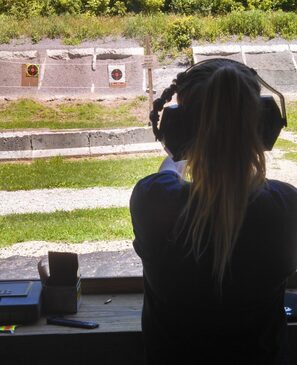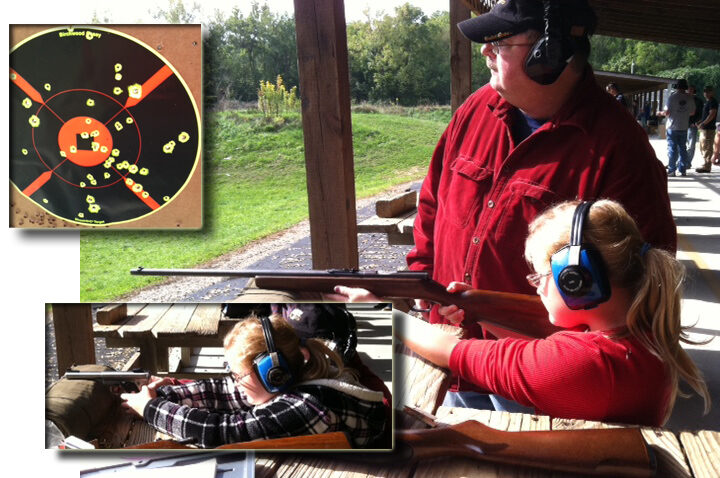S&W SAFETY MESSAGE ON M&P 15-22!!!!!!!!
IMPORTANT! M&P15-22 CONSUMER SAFETY ALERT AND INSPECTION PROCEDURE
DESCRIPTION - Please Read This If You Have A M&P15-22 Rimfire Firearm.
PRODUCT AFFECTED:
ALL models of M&P15-22 rifles and pistols manufactured before February 1, 2019.
STOP USING YOUR M&P15-22 UNTIL IT HAS BEEN INSPECTED AND YOUR BOLT REPLACED (IF NECESSARY).
Smith & Wesson has identified two M&P15-22 firearms from recent production on which the breech face counter bore depth was not within manufacturing specification. In those firearms, the lack of depth may allow the bolt, upon closing, to crush the rim of the case, causing the round to fire, cycling the bolt, and potentially resulting in multiple discharges without depressing the trigger. This issue can occur in the following two scenarios:
1) With a loaded magazine in the firearm and the bolt locked to the rear, depressing the bolt release to allow the bolt to drop freely may ignite the round as the bolt closes without engaging the trigger and with the safety selector in either the safe or the fire position, and may also result in multiple discharges.
2) With a loaded magazine in the firearm, bolt in the closed position and a round in the chamber and the safety selector in the fire position, depressing the trigger will cause the round to fire normally, however as the bolt cycles, the next round may be ignited by the bolt crushing the rim of the case as it closes, causing multiple discharges.
We believe that these are isolated incidents, however, any unintended discharge of a firearm has the potential to cause injury. Therefore, we have developed this inspection procedure to ensure that all products in the field are safe to use. We are asking customers to perform the following procedure and to refrain from using their M&P15-22 until the bolt has been inspected and replaced as necessary.
DESCRIPTION OF THE PRODUCT INVOLVED:
The out of specification condition has been found only in bolts that were recently manufactured. While our investigation suggests that the incidents are isolated, we have established this inspection procedure as a precautionary matter to ensure that all M&P15-22 firearms in service meet our design specifications. We are asking consumers of all M&P15-22 firearms manufactured before February 1, 2019 to inspect their bolt for this condition.
REMEDY/ACTION TO BE TAKEN:
The bolt from your M&P15-22 must be inspected to determine whether it exhibits the condition identified in this notice. To determine whether your firearm is affected by this condition, please inspect your firearm by following the inspection instructions provided here.
DOWNLOAD INSTRUCTION MANUAL | VIEW INSPECTION VIDEO
CLICK HERE FOR FAQ FACT SHEET - Questions and Answers Re: M&P15-22 Safety Alert!
If you are uncomfortable in conducting the bolt inspection outlined here, or are unsure whether the condition described in this notice applies to your bolt, please send your bolt to Smith & Wesson for inspection and replacement if necessary.
If you want Smith & Wesson to perform the inspection, send your bolt to Smith & Wesson for free inspection and replacement (if necessary).
If you want to perform the bolt inspection yourself, contact us for the free M&P15-22 BOLT INSPECTION GAUGE Part Number: 3012155 or place an ORDER ONLINE to receive inspection gauge.
If the bolt from your firearm is affected by the condition outlined in this notice, please send the bolt to Smith & Wesson. If necessary, your bolt will be replaced at no cost to you. Your bolt will be returned as quickly and efficiently as possible. All shipping and replacement costs will be covered by Smith & Wesson.
FOR OWNERS OUTSIDE THE UNITED STATES:
For M&P15-22 owners outside the United States, see our list of Authorized Warranty Centers that will inspect and replace your bolt as necessary.
Contact Us:
MP15-22SafetyAlert@smith-wesson.com
Smith & Wesson Customer Service Dept. 800-713-0356 Monday - Friday 8am - 6pm EST
PISTOL RANGE 25 FEET

Teaching the Principles of Sport Shooting

MANUFACTURERS RECALL
PLEASE: If you have one of these firearms, visit the website to ensure that you look to see if the firearm you have meets the Recall Criteria. If you are unsure, check with the manufacturer on the web site that is provided below:
CARACAL F & C PISTOL SAFETY WARNING AND RECALL NOTICE: http://www11.davidsonsinc.com/WebRes/ManufRecalls/caracal_recall.pdf
CZ-USA PRODUCT RECALL FOR – CZ 455 SST RIFLES: http://www11.davidsonsinc.com/WebRes/ManufRecalls/cz.pdf
GLOCK VOLUNTARY REPLACEMENT OF RECOIL SPRING ASSEMBLIES IN GEN4 PISTOLS: http://www11.davidsonsinc.com/WebRes/ManufRecalls/glock-replacement.pdf
HOWA RIFLES MODEL 1500 – STAINLESS STEEL MODEL MANUFACTURED FROM NOVEMBER 2009 THROUGH SEPTEMBER 2011: http://www11.davidsonsinc.com/WebRes/ManufRecalls/Howa_Recall.pdf
REMINGTON RIMFIRE 22 THUNDERBOLT AND TB-22A 22 LONG RIFLE AMMUNITION: http://www11.davidsonsinc.com/WebRes/ManufRecalls/remington_recall.pdf
REMINGTON MODEL 700™ AND MODEL SEVEN™ RIFLES: http://www.rsrgroup.com/important_notices/xmprecall-notice.pdf
SMITH & WESSON M&P SHIELD PISTOLS MANUFACTURED PRIOR TO AUGUST 19, 2013: http://www11.davidsonsinc.com/WebRes/ManufRecalls/mp.pdf AND http://www.rsrgroup.com/important_notices/sw-mp-shield.pdf
SMITH & WESSON SAFETY RECALL: ALL THOMPSON CENTER VENTURE RIFLES MANUFACTURED PRIOR TO OCTOBER 28, 2011: http://www11.davidsonsinc.com/WebRes/ManufRecalls/SWRecallVentureNotice.pdf
SPRINGFIELD ARMORY 3.3 XD-S SAFETY RECALL: http://www11.davidsonsinc.com/WebRes/ManufRecalls/springfield.pdf
THOMPSON CENTER ARMS ICON, VENTURE, AND DIMENSION RIFLES MANUFACTURED BEFORE JUNE 13, 2013: http://www11.davidsonsinc.com/WebRes/ManufRecalls/tca.pdf
WALTHER PK380, .380 ACP RECALL:
http://www11.davidsonsinc.com/WebRes/ManufRecalls/walther_recall.pdf ,
http://www.rsrgroup.com/important_notices/Walther_ppkrecall.pdf
RUGER MARK IV RECALL: Ruger recently discovered that all Mark IV™ pistols (including 22/45™ models) manufactured prior to June 1, 2017 have the potential to discharge unintentionally if the safety is not utilized correctly. In particular, if the trigger is pulled while the safety lever is midway between the "safe" and "fire" positions (that is, the safety is not fully engaged or fully disengaged), then the pistol may not fire when the trigger is pulled. However, if the trigger is released and the safety lever is then moved from the mid position to the "fire" position, the pistol may fire at that time.
FUNDAMENTAL NRA RULES FOR SAFE GUN HANDLING
The fundamental NRA rules for safe gun handling are:
 | 1. ALWAYS keep the gun pointed in a safe direction. This is the primary rule of gun safety. A safe direction means that the gun is pointed so that even if it were to go off it would not cause injury or damage. The key to this rule is to control where the muzzle or front end of the barrel is pointed at all times. Common sense dictates the safest direction, depending on different circumstances. |
 | 2. ALWAYS keep your finger off the trigger until ready to shoot. When holding a gun, rest your finger on the trigger guard or along the side of the gun. Until you are actually ready to fire, do not touch the trigger. |
  | 3. ALWAYS keep the gun unloaded until ready to use. Whenever you pick up a gun, immediately engage the safety device if possible, and, if the gun has a magazine, remove it before opening the action and looking into the chamber(s) which should be clear of ammunition. If you do not know how to open the action or inspect the chamber(s), leave the gun alone and get help from someone who does. |
When using or storing a gun, always follow these NRA rules:
- Know your target and what is beyond. Be absolutely sure you have identified your target beyond any doubt. Equally important, be aware of the area beyond your target. This means observing your prospective area of fire before you shoot. Never fire in a direction in which there are people or any other potential for mishap. Think first. Shoot second.
- Know how to use the gun safely. Before handling a gun, learn how it operates. Know its basic parts, how to safely open and close the action and remove any ammunition from the gun or magazine. Remember, a gun's mechanical safety device is never foolproof. Nothing can ever replace safe gun handling.
- Be sure the gun is safe to operate. Just like other tools, guns need regular maintenance to remain operable. Regular cleaning and proper storage are a part of the gun's general upkeep. If there is any question concerning a gun's ability to function, a knowledgeable gunsmith should look at it.
- Use only the correct ammunition for your gun. Only BBs, pellets, cartridges or shells designed for a particular gun can be fired safely in that gun. Most guns have the ammunition type stamped on the barrel. Ammunition can be identified by information printed on the box and sometimes stamped on the cartridge. Do not shoot the gun unless you know you have the proper ammunition.
- Wear eye and ear protection as appropriate. Guns are loud and the noise can cause hearing damage. They can also emit debris and hot gas that could cause eye injury. For these reasons, shooting glasses and hearing protectors should be worn by shooters and spectators.
- Never use alcohol or over-the-counter, prescription or other drugs before or while shooting. Alcohol, as well as any other substance likely to impair normal mental or physical bodily functions, must not be used before or while handling or shooting guns.
- Store guns so they are not accessible to unauthorized persons. Many factors must be considered when deciding where and how to store guns. A person's particular situation will be a major part of the consideration. Dozens of gun storage devices, as well as locking devices that attach directly to the gun, are available. However, mechanical locking devices, like the mechanical safeties built into guns, can fail and should not be used as a substitute for safe gun handling and the observance of all gun safety rules.
- Be aware that certain types of guns and many shooting activities require additional safety precautions.
- Cleaning Regular cleaning is important in order for your gun to operate correctly and safely. Taking proper care of it will also maintain its value and extend its life. Your gun should be cleaned every time that it is used.
A gun brought out of prolonged storage should also be cleaned before shooting. Accumulated moisture and dirt, or solidified grease and oil, can prevent the gun from operating properly.
Before cleaning your gun, make absolutely sure that it is unloaded. The gun's action should be open during the cleaning process. Also, be sure that no ammunition is present in the cleaning area.
